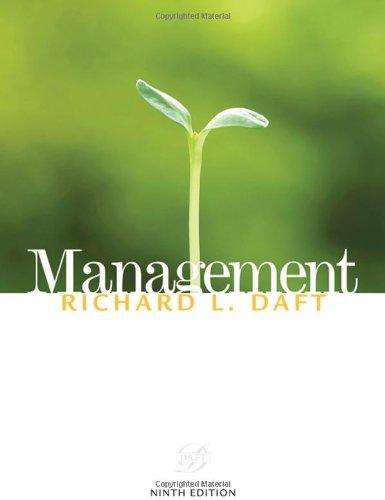Ever since green became the new black, U.S. companies have been scrambling to change their products, packaging,
Question:
Ever since green became the new black, U.S. companies have been scrambling to change their products, packaging, and energy consumption to stay in the game. Thanks to Eric Hudson’s perceptive scanning of the external environment in the mid-1990s, he saw an opportunity others missed when the eco-craze hit.
At a sociocultural level, Hudson observed that an increasing number of consumers were actively engaged in their local recycling programs, and recycled materials were plentiful. Even though consumers made the effort to recycle, they never saw what happened to their recycling after it left the curb. A self-congratulatory pat on the back was their only reward. How satisfying could it be for recycling zealots to purchase something— anything—made with recycled materials? Hudson broke into the natural product arena with an innovative toothbrush made from recycled materials— a bold decision in 1996.
Hudson named his first product the Preserve Toothbrush, and a company called Recycline was born. (The company has since been rebranded “Preserve,” with the “Recycline” name stepping into the background as the parent company.) The Preserve Toothbrush, with nylon bristles and a 100 percent recycled-plastic, reverse-curved, ergonomic handle, was a hit with eco-conscious consumers. The buzz grew and new converts flocked to it.
Energetic and full of ideas, Hudson gradually added other sleek and stylish products to his developing venture. Preserve’s current product line features razors, colanders, cutting boards, tableware, and more. It also formed a strategic partnership with Whole Foods, which provided an ideal opportunity to expand its line and customer base. Preserve’s latest joint venture with Target will bring its products to the masses.
Although Preserve doubled its business every year for the last three years, Hudson and his senior management team need to stay attuned to different dimensions of the external environment to ensure they don’t miss important news that could affect the company. Not surprisingly, advances in the plastics technologies are always on their radar. Both Hudson and Preserve’s director of marketing, C. A. Webb, are anticipating future competition from big corporate players who enter the green market, determined to make a profit. The possibility of a green backlash in the United States also concerns Hudson.
Webb believes that customers can sense if a company has integrity and are getting wise to the “greenwashing effect” in which businesses cultivate a superficial green image without enough substance to back it up. A close look at Preserve’s internal culture confirms that this company is eco-conscious and has been from the start.
After working at Fidelity Investments for six years, Hudson wanted to run his own business and do something for the planet. Eager to shed the stiff shackles of corporate America, he craved a culture that was both casual and effective. He knew his company needed to strike a balance between being process driven and agile. The vice president of sales, John Turcott, thinks Preserve’s small size, at 14 employees, makes collaboration critical to its culture.
Everything at Preserve, even collaboration, happens at high-speed, so everyone has to be driven, creative, and adaptable. “The entrepreneurial slant is, ‘We gotta get these things done TODAY.’ So, our decision making process is quicker. We pull together the resources we need to solve a problem, we get it done and move on to the next thing.” Anyone interested in taking on a new initiative is encouraged to do so, regardless of position.
As Preserve’s cultural leader, Hudson practices what he preaches. When he isn’t pedaling 22 miles to and from work on his bicycle, he’s cruising in a Volkswagen that has been converted to run on french-fry grease—an emerging symbol of the modern-day ecohero. Everyone at Preserve tries to do right by the natural environment, whether it’s composting, conserving
energy, using eco-friendly cleaning products, or anything else that makes a difference. Many take the commuter rail to work, even if it would be faster and much more convenient to drive.
Discussion Questions
1. Which of the following best describes Preserve’s culture: adaptable, consistent, successful, collaborative, or high performing? Explain.
2. In the future, to whom should Hudson pay close attention and why: customers or competitors?
3. Explain what other aspects of the general environment are relevant to Preserve?
Step by Step Answer:






